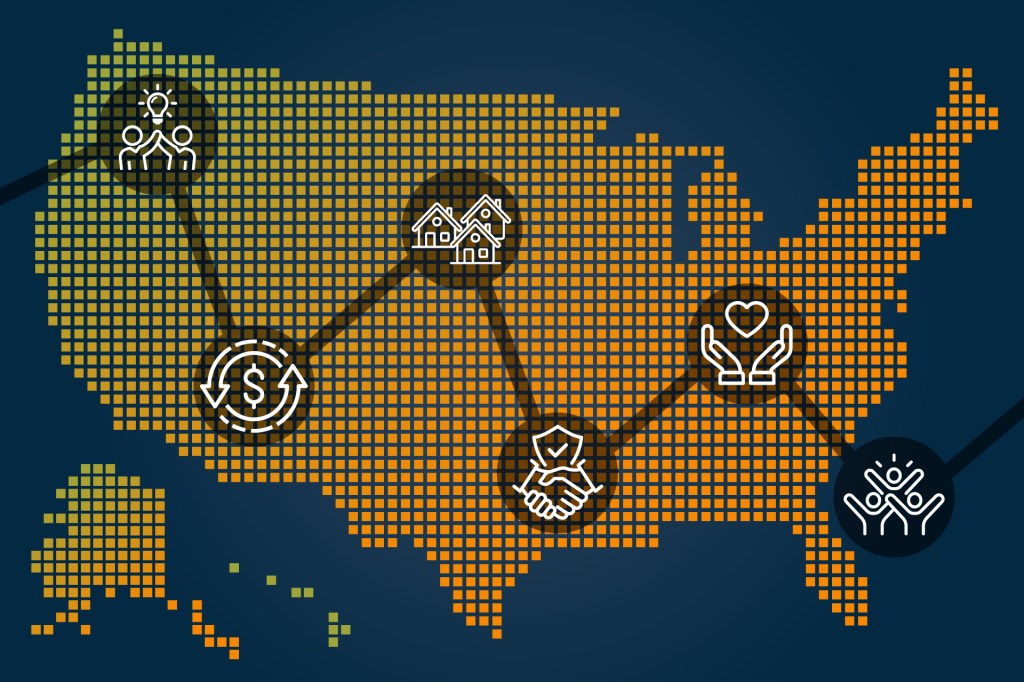Data
-

2025 Community Perspectives Survey: Insights from the field—Health of entities serving low- and moderate-income communities
The second report from the 2025 Community Perspectives Survey highlights how LMI-serving organizations are managing demand, funding, and staffing. While many can meet community needs, challenges like resource strain and adapting to uncertainity are impacting their overall organizational health.
-

2025 Community Perspectives Survey: Insights from the field—Economic conditions in low- and moderate-income communities
The 2025 Community Perspectives Survey, conducted nationally by the Federal Reserve, provides an overview of economic conditions in low- and moderate-income (LMI) communities. The first report examines key findings in the areas of housing, employment, financial stability, health, education, small business and access to technology.
-

Community Perspectives Survey: Insights from the field—Health of entities serving low- and moderate-income communities
The second report from the 2024 Community Perspectives Survey focuses on the health of organizations serving low- and moderate-income (LMI) communities and discusses the challenges they face. These organizations provide vital services to lower-income communities and infrastructure that promotes economic resilience and mobility.
-

Community Perspectives Survey: Insights from the field—Economic conditions in low- and moderate-income communities
The 2024 Community Perspectives Survey, conducted nationally by the Federal Reserve, provides an overview of economic conditions in low- and moderate-income (LMI) communities. The first report examines key findings in the areas of housing, employment, financial stability, health, education, small business and access to technology.
-

CDFI Survey findings on output and outcome tracking
The 2023 CDFI Survey offers insights on impact measurement and management for community development financial institutions (CDFIs). Learn about output and outcome metrics, challenges, and implications for capacity building among CDFIs.
-

Banking Deserts Dashboard
Discover banking deserts and potential ones using the Banking Deserts dashboard. This interactive dashboard provides census tract-level data of states and counties from 2019-2025.
-

2023 CDFI Survey Key Findings
From April 24 through June 2, 2023, the Federal Reserve fielded the 2023 CDFI Survey. Respondents touched on demand for products and services, innovation, and impacts of rising interest rates, a tight labor market, and rising wages. Here’s what 453 CDFIs said about their financial well-being and the road ahead.
-
![Perspectives from Main Street: The impact of COVID-19 on communities and the entities serving them [2022]](https://fedcommunities.org/wp-content/uploads/2022/10/2022-perspectives-main-street-1920x1280-1.png?w=1024)
Perspectives from Main Street: The impact of COVID-19 on communities and the entities serving them [2022]
This report offers findings of a survey designed to collect information on the effects of COVID-19 on low- to moderate-income people and communities and the entities serving them in 2022.
-
![Perspectives from Main Street: The impact of COVID-19 on workforce entities [2021]](https://fedcommunities.org/wp-content/uploads/2021/11/mainst-perspectives-1920x1280-1.jpg?w=1024)
Perspectives from Main Street: The impact of COVID-19 on workforce entities [2021]
Workforce development and job service entities experienced the impacts of the COVID-19 pandemic, with almost all reporting disruptions in 2021. Here’s what survey data tells us.
-
![Perspectives from Main Street: The impact of COVID-19 on communities and the entities serving them [2021]](https://fedcommunities.org/wp-content/uploads/2021/09/perspectives-from-main-street-survey-2021.jpg?w=1024)
Perspectives from Main Street: The impact of COVID-19 on communities and the entities serving them [2021]
The spread of COVID-19 and the many efforts to slow it are impacting communities throughout the nation. To best respond to this crisis, information is needed about the scope and scale of challenges in various communities. This report offers findings of a survey designed to collect information on the effects of COVID-19 on low- to…





